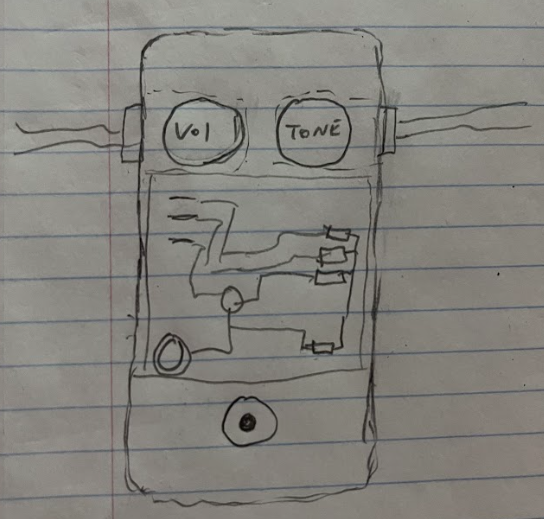After some consideration and debate about what project and aesthetic I would be able to design, fabricate, and look good in the next month I have decided that I am going to make a guitar pedal for the main project. Last week I originally stated that I wanted to make a guitar or guitar stand but both of those seem a little complicated to fabricate within the time frame I have. Therefore, a pedal will be a good project because the design should be simple and easy to fabricate. I also like this idea because I would use a guitar pedal but have never really wanted to buy one because of their expensive price tags. The main idea right now is to first get what kind of guitar pedal I want nailed down. Right now, I think that the distortion or fuzz pedals will be the easiest to do because I have found access to parts and the circuit design that would be needed to make one of these pedals. Since these pedals have relatively simple circuitry, I wouldn’t have to spend too much on circuit components. I would start by creating the distortion circuit on a breadboard and confirming it works with my guitar signal and the amplifier I have. If this breadboard circuit works, I will design a pcb for this circuit and have it printed at the ITLL or privately. This way I can keep the circuit managed and in a geometric shape to put in the pedal casing. This design will have multiple moving parts including volume and/or tone knobs as well as an activating footswitch to satisfy the moving part requirement. For the casing I want to implement a Technocore or some sort of Tesla-punk style. These aesthetics are big on their emphasis of electronic circuitry, printed circuit boards and almost an industrial style. To emphasize this style I am thinking of making the pedal case out of clear polycarbonate or acrylic to expose the inside circuitry and metal components. I think that this will be a cool feature as it will allow anyone to see the pcb circuit. To make this even better, I will attempt to add LED lights that are blue or yellow into the footswitch circuit. When the footswitch is activated to turn the circuit on, the LED’s will activate and produce a glow from within the pedal. Not only will this be a functional feature letting the user know the pedal is on, but it will also make the aesthetic better as a “glow” will be created around the circuit. If this pedal works out, I may try to make more pedal variation depending on the time and cost it takes to design and fabricate the first one. My backup plan if this doesn’t work out is to continue making an industrial aesthetic guitar stand out of metal piping.



All images are my own sketches.


2 Comments. Leave new
Hey Ethan, I like the idea of having the PCB encased in polycarbonate or clear acrylic. I think being able to see the inner circuits and lighting is a awesome design feature. I was wondering how much circuitry experience you have before starting this project?
Hi Ethan,
I am really excited to see how your petal works out! I think it would be really cool to see, and hope that it turns out really well. I was wondering if you had any plans to have the LED’s change color based on the distortion level. I think this could look really cool, and hopefully wouldn’t add too much work onto your project already. This project seems really exciting, and I hope to see the final design once it’s all working!